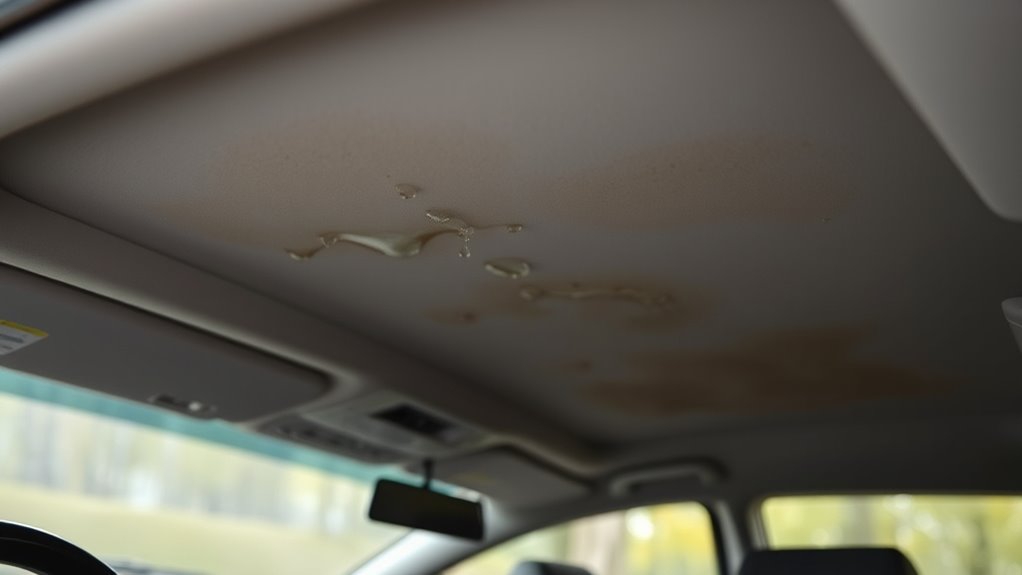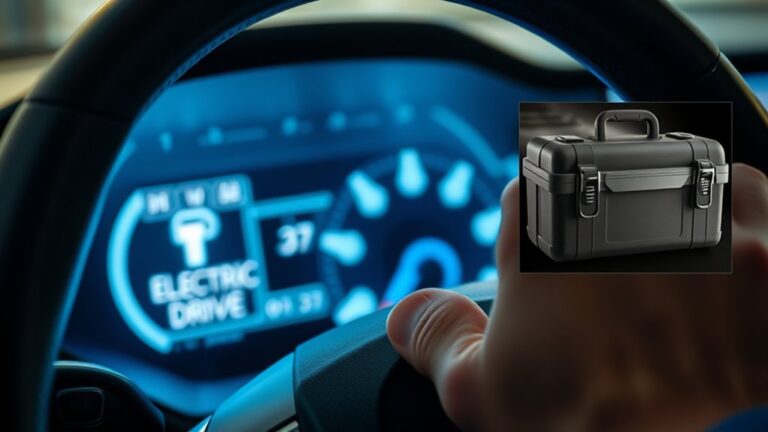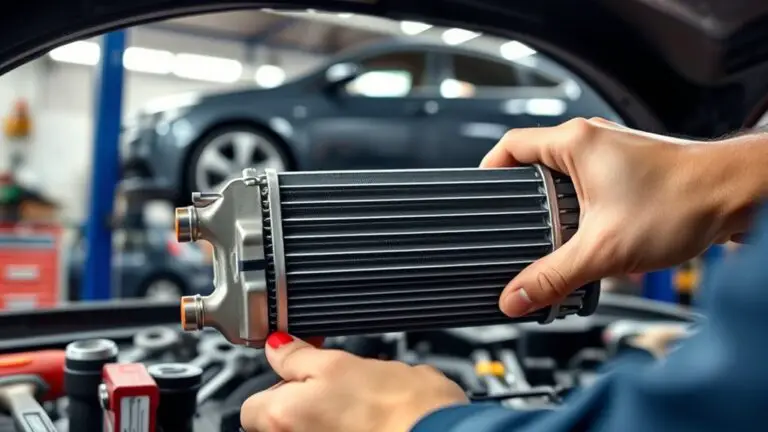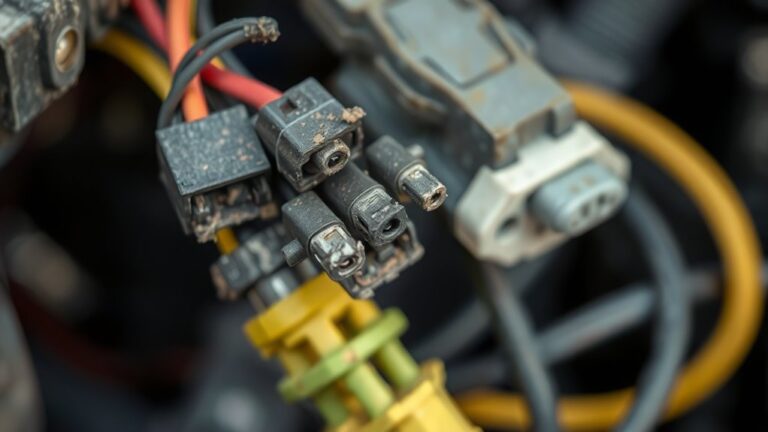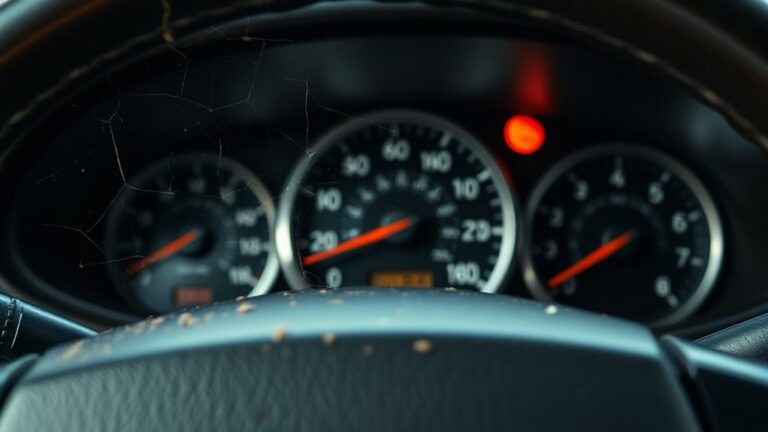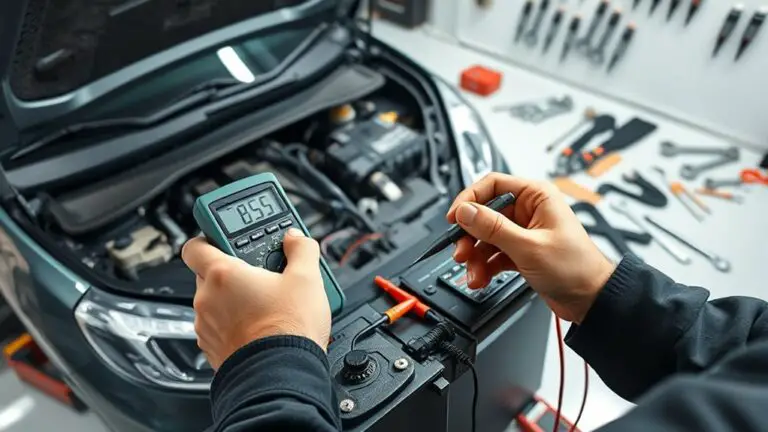When Sunroof Leak Suggest Bigger Electrical Issues
A sunroof leak isn’t just water in the cabin; it points to electrical vulnerabilities. Water intrusion can flood seals, drains, and harnesses, triggering erratic window/mirror operation, blown fuses, and latent corrosion that degrades connectors and grounds. Track moisture paths from the sunroof, through channels and into dash areas, and inspect for corrosion, loose grounds, and blocked drains. Verify supply voltage, ground integrity, and connector stability before restoring function. If issues persist, you’ll uncover deeper electrical risks you should explore next.
How a Sunroof Leak Warns About Electrical System Health
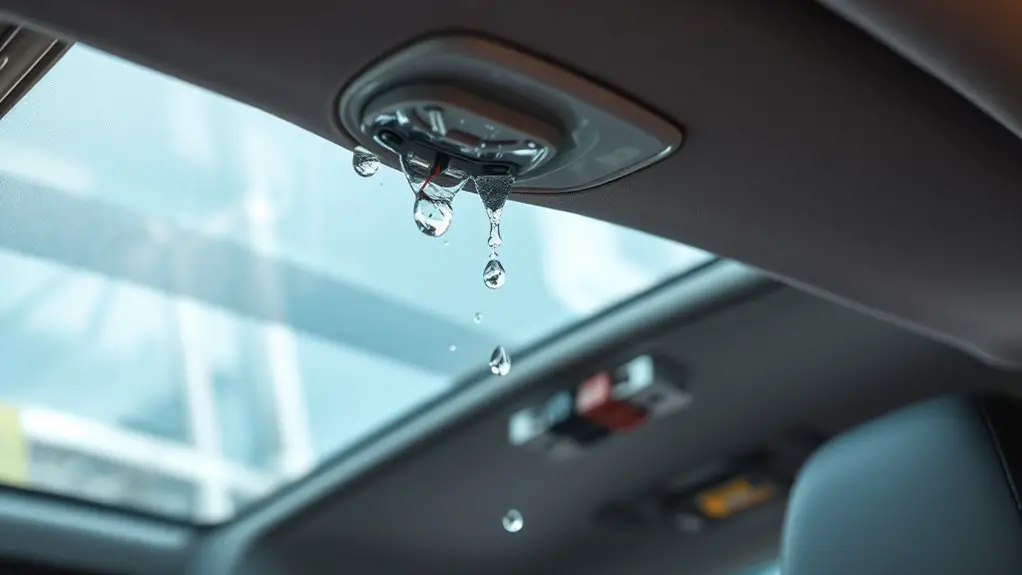
A sunroof leak often signals more than interior dampness; it can indicate underlying electrical system vulnerability. You approach this as a diagnostic task, not a guess. You’ll map moisture sources to circuit exposure, noting how water ingress can compromise wiring insulation, connectors, and sensor grounds. Begin with sunroof maintenance checks: seal integrity, drain tubes, channel cleanliness, and sunshade fit. If seals leak or drains clog, water finds paths toward the fuse box, control modules, and interior grounds, elevating corrosion risk and fault codes. Next, perform electrical diagnostics with a systematic mindset: verify continuity to grounds, inspect for oxidation, and test with a moisture meter near critical components. Look for abnormal resistance or intermittent faults that align with liquid exposure. Document findings, isolate affected circuits, and implement targeted repairs before chaining failures occur. Maintain a proactive stance: preventive maintenance reduces risk, protects reliability, and sustains safe operation.
Common Electrical Risks Triggered by Water Intrusion

Water intrusion can cause immediate electrical shorts, risking fault codes and intermittent operation. As moisture spreads, corrosion risks rise on terminals and PCBs, potentially degrading connections and sensor signals. You’ll also need to assess fuse and relay integrity, since water can trigger failures or latent faults that recur after drying.
Water Intrusion Triggers Shorts
When water enters an enclosure, it can create unexpected electrical shorts by bridging conductive paths, corroding contacts, and compromising insulation. You’ll see sudden voltage drop, blown fuses, or misbehavior in relays and sensors. Water damage initiates leakage paths that bypass intended isolation, so signals scatter and loads share unexpected currents. A short can occur even without visible moisture on components, due to liquid bridging across PCB traces or connector pins. Electrical malfunction becomes a diagnostic clue: intermittent faults, phantom readings, or failed safety interlocks. Identify ingress sources, trace probable conductive routes, and test insulation resistance with a calibrated meter. Early isolation and cleaning reduce risk, but persistent intrusion demands enclosure redesign or sealing. Monitor for residual dampness, then verify system functionality after restoration.
Corrosion Risks Rise
Corrosion raises the stakes once water intrusion occurs, accelerating metal degradation at contacts, fasteners, and PCB terminations. You’ll likely see increased contact resistance, intermittent signals, and subtle shorts that worsen with humidity. Wet environments corrodes connectors, solder joints, and grounded planes, compromising harness integrity and safety circuits. Diagnostics hinge on resistance measurement, insulation checks, and visual inspection for greenish film or pitting. Prioritize corrosion prevention by sealing vulnerable seams, applying conformal coatings, and replacing damaged fasteners with corrosion-resistant alloys. Implement moisture management strategies: route condensation away from critical interfaces, enhance drainage paths, and maintain proper ventilation around the sunroof module. Consistent cleanliness and timely drainage maintenance reduce long‑term degradation, supporting reliable electrical performance under diverse ambient conditions.
Fuse and Relay Failures
Fuse and relay failures are a common consequence of water intrusion, where moisture increases resistance and promotes intermittent or complete failures in power and control circuits. When you confront a sunroof or ancillary system outage, test for voltage at the fuse block and observe for inrush or erratic readings. If a fuse light flickers or a circuit cuts, perform fuse replacement only after confirming the fault isn’t upstream corrosion or a short. For relay testing, listen for click indicators and verify coil resistance against spec; a lazy or stuck relay mirrors a blown fuse in symptoms. Document failure modes, replace failed components, and recheck circuits under load. Prioritize clean connections, secure seals, and repeat testing to guarantee reliable operation.
The Pathways Water Takes Into the Cabin and Under Dash Panels
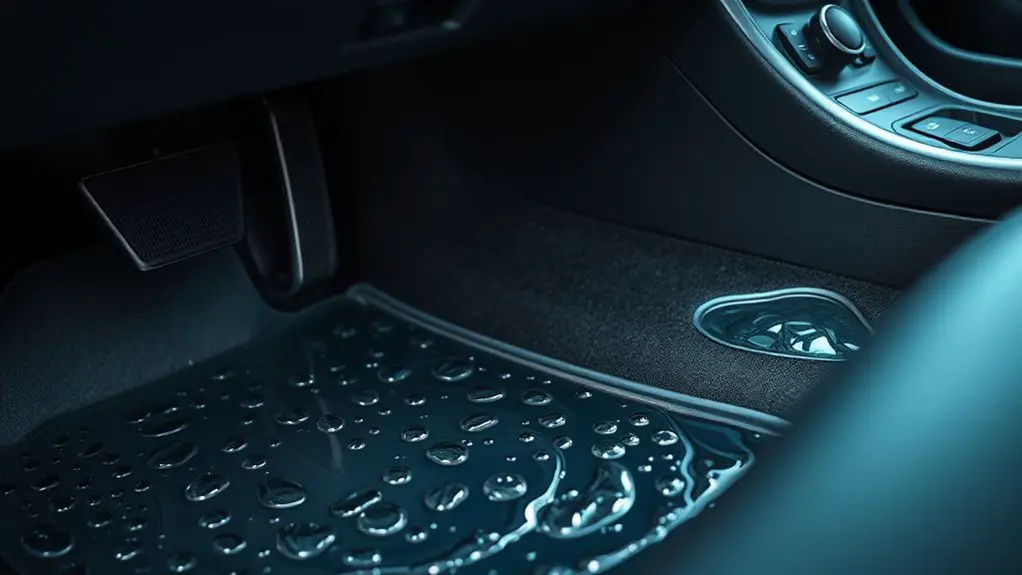
Water can enter the cabin through multiple entry points and follow a predictable path to the space under the dash. You’ll track moisture as a diagnostic signal, not a mystery, focusing on water pathways that converge behind dashboard panels. Pinpointing these routes helps you isolate leaks and assess their impact on harness routing, connectors, and fuses. Expect moisture to travel along seams, joints, and HVAC plenum cavities, then collect at lower panels or away from critical electronics.
Water infiltration tracks moisture toward the dash, guiding diagnostics and harness safety.
- Entrance at the sunroof or door seals, channeling water toward trim gaps.
- Windshield cowl and A-pillar seams that shed runoff into the dash area.
- HVAC drain tubes that clog or detach, pooling behind the dash.
- Loose panels or damaged grommets that create secondary puddles near connectors.
With a methodical approach, you determine whether dampness affects wiring harnesses, grounds, or modules. Prioritize thorough inspection of water pathways and dashboard panels to prevent concealed faults.
Signs of Wiring Damage You Might Not Notice
You should start by noting hidden corrosion risks lurking in connectors and ground paths that can silently degrade insulation and harness integrity. Look for subtle water intrusion indicators around seals and under dash panels, as moisture can accelerate corrosion and create intermittent electrical faults. Run through targeted electrical system checks—continuity, insulation resistance, and function tests for critical circuits—to identify faults before symptoms escalate.
Hidden Corrosion Risks
Hidden corrosion is a quiet risk in automotive wiring, often progressing behind panels or under insulation before any lights or fuses reveal a problem. You’ll want to spot subtle signs before failure; corrosion doesn’t scream, it corrodes. Prioritize detection methods that target hidden moisture and contact degradation, not just visible rust.
1) Look for dull or greenish deposits at connectors; you may feel resistance where pins meet sockets.
2) Inspect looms for white powder or crust at insulation edges, a telltale moisture signature.
3) Test continuity in short runs to reveal intermittent breaks caused by corrosion buildup.
4) Schedule early wiring audits after storms or roof leaks to prevent cascading faults.
Corrosion prevention hinges on tight seals, proper routing, and eliminating hidden moisture before it spreads.
Water Intrusion Indicators
Narrow windows and damp looms can quietly indicate water intrusion, even when there’s no visible leak. You’ll want a precise read of indicators that point to hidden trouble. Water damage isn’t always obvious on first glance, but patterns emerge: staining along wiring harnesses, crusty residues on connectors, and soft or spongy insulation near door sills or roof channels. Moisture detection tests—spot checks with calibrated sensors, surface moisture meters, and pin probes—reveal anomalies beyond cosmetic clues. Look for intermittent corrosion on fuse blocks, relay bases, and ground points; these symptoms can escalate into degraded performance or intermittent faults. Documented moisture exposure increases failure risk, guiding timely remediation before full electrical degradation. In practice, maintain vigilance, test systematically, and prioritize targeted drying to preserve system integrity.
Electrical System Checks
Water intrusion often leaves subtle electrical clues, so start by inspecting wiring for signs you might not notice. You’re aiming for clear, actionable checks that reveal hidden faults without guesswork. Focus on wiring integrity and moisture detection as core indicators of potential damage.
- Inspect connectors for corrosion, looseness, or darkening that implies moisture exposure and degraded contact surfaces.
- Look for greenish deposits or pale residue on insulation, which signal moisture ingress and discoloration of protective coatings.
- Test for continuity and insulation resistance with a meter; open circuits or sudden drops suggest compromised wiring paths.
- Observe intermittent operation or abnormal fuse/relay cycling, which point to latent shorting or impedance changes caused by moisture.
Proceed methodically, document findings, and prioritize repairs before symptoms escalate.
Grounding Points and Corrosion: Why They Matter
Grounding points and corrosion matter because a solid ground path guarantees electrical systems function reliably while corrosion raises resistance, causes intermittent faults, and can lead to shorts. You’ll verify chassis and body grounds first, inspecting for loose bolts, paint interference, or damaged sleeves. Corrosion often hides behind connector backshells and under seals, so you test continuity with a multimeter, noting any drop that exceeds spec. If you find resistance creeping up, reterminate or replace compromised conductors, and restore bare metal touch points through proper surface preparation. Use bonding straps where links are high current, ensuring low impedance paths between battery, frame, and electronics. Adhere to grounding techniques that maintain clean, bright metal contacts and clamp connections firmly. For prevention, apply corrosion prevention compounds on exposed metal after cleaning, and seal vulnerable areas to deter moisture ingress. Regular checks reduce latent faults and support reliable sunroof operation without unnecessary diagnosis.
Diagnosing Electrical Symptoms Linked to Sunroof Leaks
Sunroof leaks can induce relate electrical symptoms across multiple circuits; when water intrusion reaches roof electronics, you’ll see erratic window/mirror operation, blown fuses, or module faults. To diagnose, start with a targeted electrical diagnostics approach: verify supply voltage, ground integrity, and connector stability at affected modules. Use a scan tool to repo.set codes, then cross-check with live data to distinguish transient faults from persistent faults caused by moisture. Inspect for corrosion at harness pins, seals, and grounding points, and isolate the leak path to confirm electrical impact.
- Check window/mirror control modules for intermittent data errors during moisture exposure.
- Inspect fuses and relays relevant to roof electronics, noting any rapid cycling or abnormal readings.
- Scan for body-control and comfort-module codes that align with door, roof, or sunroof functions.
- Assess wiring harness insulation and connector seals after any suspected ingress, documenting changes over time.
Focus on sunroof maintenance and electrical diagnostics to prevent cascading faults.
Preventive Measures to Stop Moisture From Reaching Critical Components
To prevent moisture from reaching critical components, implement a layered sealing and drainage strategy that prioritizes early ingress detection and rapid remediation. You’ll install moisture barriers at key interfaces and route water toward exit paths with gravity-assisted drainage. Use sealing techniques that accommodate expansion, contraction, and environmental debris without compromising electrical isolation. Regularly inspect seals around the sunroof frame, tracks, and ducting for signs of micro-tears or chemical degradation, and replace compromised material promptly. Integrate diagnostic channels that log moisture exposure and surface conductivity to guide maintenance decisions. Keep an accessible inspection window for quick checks after rainfall or car washes, and don’t overlook venting pathways that could pool water near electronics. Favor non-porous, chemically resistant materials with proven longevity in temperature swings. Document preventive actions, test under simulated ingress, and tighten tolerances to minimize unexpected gaps. This approach supports reliability and freedom by reducing uncertainty and preserving electrical integrity.
Step-by-Step Safe Inspection Without Ignoring Safety
Since moisture and electricity can interact unpredictably, start with a quick safety check before any inspection. You’ll minimize risk and focus on diagnostics, not drama.
1) Inspect power paths first: disconnect power, verify battery isolation, and use a non-contact meter to confirm no live circuits before touching the sunroof actuators or wiring.
2) Visual and tactile sweep: look for corrosion, insulation wear, and moisture tracks; feel for stiffness in moving parts that hints at binding or compromised seals.
3) Ground and drain verification: confirm chassis ground integrity, test drainage tubes for blockages, and guarantee water is routed away from electronics.
4) Documentation and containment: log findings, isolate affected harnesses if needed, and plan next steps aligned with sunroof maintenance and leak prevention.
This method keeps you diagnostic-focused, promotes safety, and preserves freedom to troubleshoot while protecting electronics.
When to Seek Professional Help for Electrical and Sunroof Issues
If you’re unsure whether the issue is electrical or mechanical, at what point should you call in a pro? When symptoms persist after basic checks, or diagnostic tools indicate faults beyond DIY scope, seek expert evaluation. Professional help is warranted for persistent sunroof leaks, erratic motor operation, or unusual wiring signs. You’ll benefit from a technician who can perform focused sunroof maintenance and electrical diagnostics, verify seals, harness integrity, and actuator health, and pinpoint root causes without unnecessary part swaps. Early professional assessment can prevent corrosion, short circuits, and safety risks. Document symptoms, timing, and noises to speed up the process.
| Step to reflect on | What to expect |
|---|---|
| Symptom onset | Documented pattern, timing, and controls used |
| Diagnostic scope | Electrical diagnostics with multimeter and scan tools |
| Repair plan | Targeted fixes, parts, and warranty implications |
| Safety implications | High-priority if airbags/gyros involved |
| Follow-up | Verification of leak reduction and function |
Frequently Asked Questions
Can a Sunroof Leak Cause Fuse Box Damage?
Yes, a sunroof leak can lead to fuse box damage if moisture reaches electrical components. You should stop driving, power down the system, and inspect for water intrusion. Check seals, drain tubes, and routing of wiring. Regarding sunroof maintenance, dry out and dry-rate connectors, then perform electrical troubleshooting for corrosion or shorts. If damage is suspected, consult a professional. Do not bypass safety features; water issues can escalate into electrical failures.
How Long After a Leak Before Electrical Issues Appear?
Leaks don’t announce a timer, but the clock starts the moment you spot a drip. In most cases, electrical symptoms can appear days to weeks after a leak, depending on exposure and wiring protection. You should act fast. Use sunroof maintenance tips and leak detection methods to pinpoint intrusion, dry the area, and inspect fuses and modules. If symptoms persist, consult a professional. Stay vigilant, keep diagnosing, and protect your freedom to ride confidently.
Can Moisture Trigger False Airbag or Sensor Warnings?
Yes, moisture can trigger false airbag or sensor warnings. You might see erratic readings or warning lights due to moisture effects on airbag sensors and related circuits. Inspect seals, harnesses, and modules for intrusion, corrosion, or moisture trails. Dry affected areas, replace compromised connectors, and verify with diagnostic scan tools. If warnings persist, treat as a potential fault risk, and consult a professional to avoid unreliable deployment in a crash.
Do Sunroof Drains Affect Under-Dash Wiring?
Yes, sunroof drains can influence under-dash wiring if leaks reach the harnesses. During sunroof maintenance, inspect for moisture tracks and corrosion signs; clogged drains increase water intrusion, promoting electrical corrosion in nearby connectors. Look for wet carpets and damp insulation, then verify under-dash connectors for corrosion or resistance changes. Diagnose with a multimeter, clean and seal drainage paths, and replace damaged wiring as needed. Maintain airflow, watch for sensor faults, and document every maintenance step.
Are Reputable Auto Electricians Needed for Diagnosis?
Are reputable auto electricians needed for diagnosis? Yes, you should consult an auto electrician for precise tracing of electrical faults related to a sunroof leak. Their expertise minimizes misdiagnosis and speeds repair. Expect diagnostic steps, component testing, and electrical isolation to confirm whether water intrusion affected wiring. For ongoing reliability, combine this with sunroof maintenance tips: seal checks, drain clearing, and regular system inspections to prevent future faults.

